Page 4 of 9
Posted: Mon Jul 21, 2008 3:32 pm
by DAMN YANKEE
Thanks,
The barrel is a 30", No.1, heavy weight.
The total rifle weight should come in at around 12 lbs.
Posted: Tue Jul 29, 2008 12:49 pm
by DAMN YANKEE
The first drawings from Barry Lee Hands came through on the rifle. The amount of work in balancing out the art with the space comes into play as Barry moves from the earliest draft...
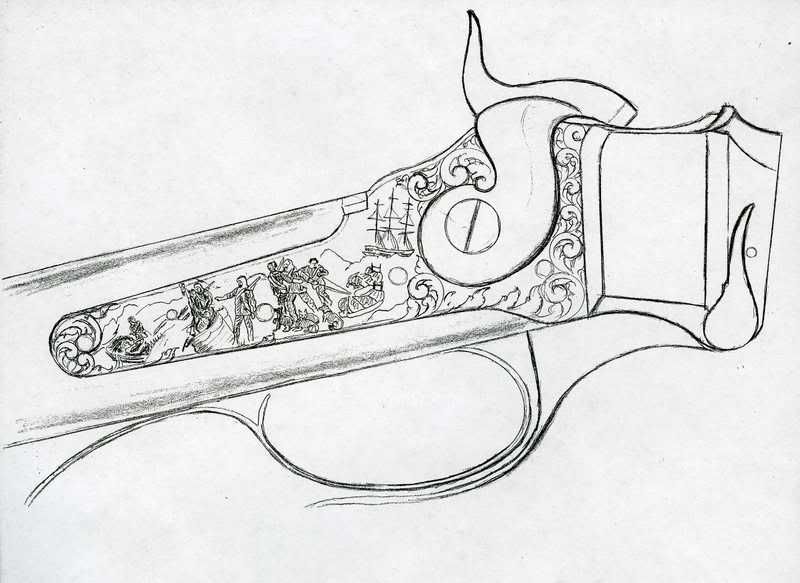
To a more properly aligned left hand segment....swaping our panels, etc.

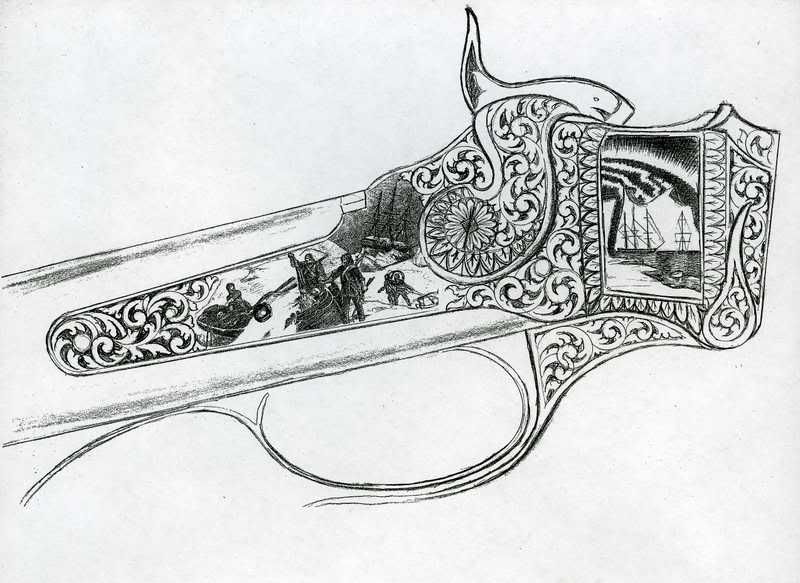
To a really fine job, including a new panel rendition....positioning takes into account the screws. Looks great!
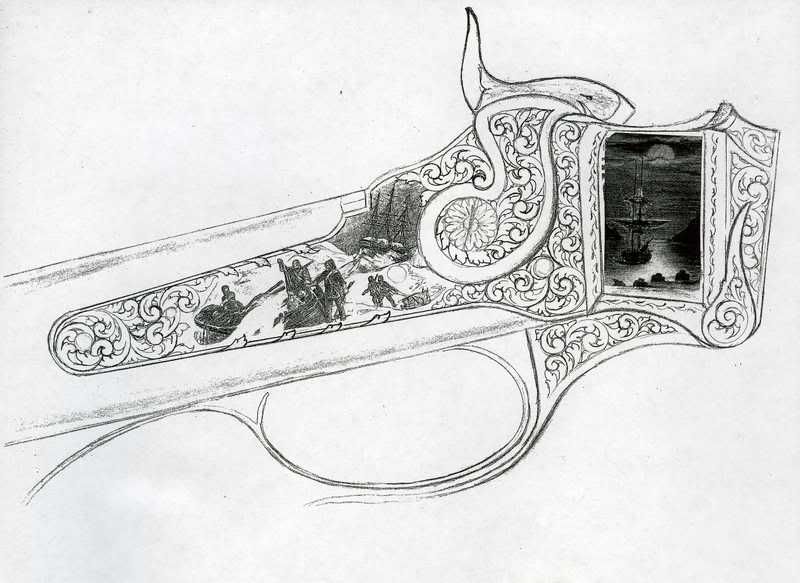
The panels are flushed out a bit more...
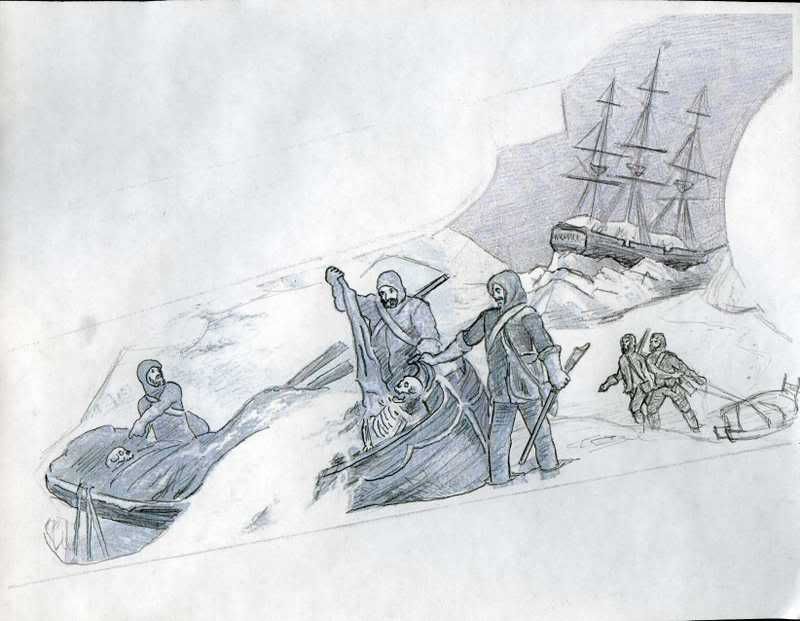

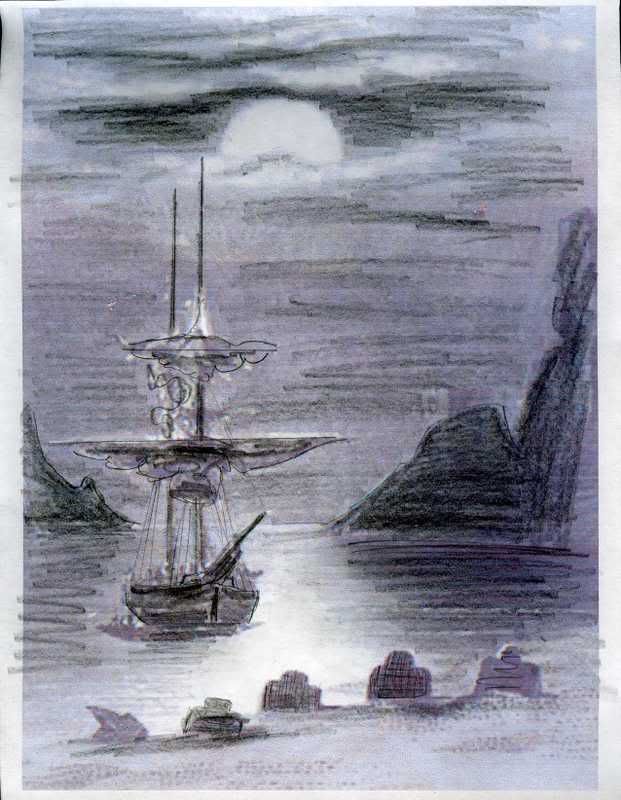
an early sketch of the hardware... this will be one of the most difficult ivy and fills to do, fully fashioned and detailed.
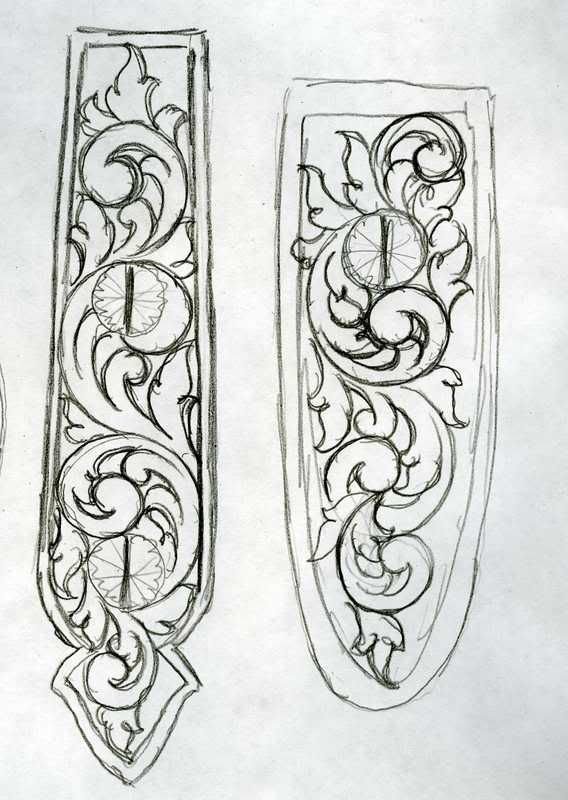
The style to be used.....lots of work but what an effect of depth and richness.

I came back and recommended the whale takes up the whole hammer, strike face to tumb pull and the a squid be shown attacking the whale (rising up the hammer arm).
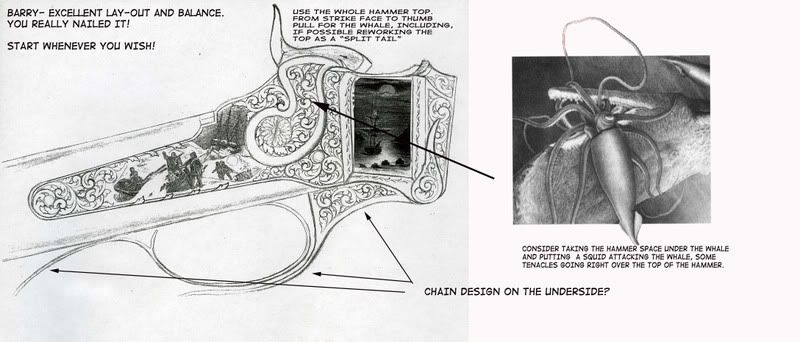
Barry will review my thoughts...but, as the artist, he makes all the final calls. I either impress him that the new form or graphic makes sense...or it just isn't going to get on the rifle.....
We are on our way....
Posted: Tue Jul 29, 2008 12:58 pm
by DavidVanVorous
DAMN YANKEE wrote:The first drawings from Barry Lee Hands came through on the rifle. The amount of work in balancing out the art with the space comes into play as Barry moves from the earliest draft...

To a more properly aligned left hand segment....swaping our panels, etc.


To a really fine job, including a new panel rendition....positioning takes into account the screws. Looks great!

The panels are flushed out a bit more...



an early sketch of the hardware... this will be one of the most difficult ivy and fills to do, fully fashioned and detailed.

The style to be used.....lots of work but what an effect of depth and richness.

I came back and recommended the whale takes up the whole hammer, strike face to tumb pull and the a squid be shown attacking the whale (rising up the hammer arm).

Barry will review my thoughts...but, as the artist, he makes all the final calls. I either impress him that the new form or graphic makes sense...or it just isn't going to get on the rifle.....
We are on our way....
Absolutely elegant and the test leaf sample is phenomenal. Iffen I might kibbitz Id stick with the engravers sketches and not do the squid as it might get a little too busy-lost in all the other details. There is the flip side of the action one could to it on though...
D.
Posted: Tue Jul 29, 2008 1:02 pm
by El Mac
Spectacular! Splendid!!!
I've been wondering.......thanks for the update. This is going to be IMPRESSIVE!
Posted: Tue Jul 29, 2008 3:02 pm
by DAMN YANKEE
Frederick Schwatka
SCHWATKA, Frederick, explorer, born in Galena, Illinois, 29 September, 1849. After graduation at the United States military academy in 1871 he was appointed 2d lieutenant in the 3d cavalry, and served on garrison and frontier duty until 1877. He also studied law and medicine, and was admitted to the bar of Nebraska in 1875, and received his medical degree at Bellevue hospital medical college, New York, in 1876. On hearing the story of Captain Thomas F. Barry, who, while on a whaling expedition in Repulse bay in 1871-'3, was visited by Esquimaux who described strangers that had travelled through that region several years before, and who had buried papers m a cavern, where silver spoons and other relics had been found, Lieutenant Schwatka determined to search for traces of Sir John Franklin's party, and, obtaining leave of absence, fitted out an expedition. On 19 June, 1878, accompanied by William H. Gilder (q. v.) as second in command, he sailed in the " Eothen " for King William's Land. The party returned on 22 September, 1880, having discovered and buried many of the skeletons of Sir John Franklin's party, and removed much of the mystery of its fate. Lieutenant Schwatka found the grave of Lieutenant John Irving', 3d officer of the "Terror," and, in addition to many interesting relics, a paper which was a copy of the Crozier record that was found in 1859 by Lieutenant William R. Hobson, of Sir Leopold McClintock's expedition, and which contained two records, the latter, under date of 25 April, 1848, stating the death of Sir John Franklin on 7 June, 1847. This expedition was also marked by the longest sledge-journey on record-3,251 statute miles, during which a branch of Back's river was discovered, which Lieutenant Schwatka named for President Hayes. Afterward he explored the course of the Yukon river in Alaska, and rejoined his regiment in July, 1884. ]n August of that year he resigned the commission of 1st lieutenant, 3d cavalry, to which he had been appointed in March, 1879. He commanded the New York " Times " Alaskan exploring expedition of 1886. Lieutenant Schwatka has received the Roquette Arctic medal from the Geographical society of Paris, and a medal from the Imperial geographical society of Russia, and is an honorary member of the Geographical societies of Bremen, Geneva, and Rome. He is the author of "Along Alaska's Great River " (New York, 1885); " Nimrod in the North" (1885); and "The Children of the Cold" (1886). See "Schwatka's Search," by Colonel William H. Gilder (New York, 1881): "Tile Franklin Search under Lieutenant Schwatka " (Edinburgh and London, 1881); and "Als Eskimo unter den Eskimo," by Henry Klutsehak (Leipsic, 1881).
Posted: Tue Jul 29, 2008 3:03 pm
by DAMN YANKEE
U.S. Lieutenant Frederick Schwatka (1849-1892) crossed the Chilkoot Pass and explored the Yukon River in 1883 under orders from General Nelson A. Miles and without notifying the Canadian government. His photographer and topographer, Pte. Charles A. Homan, made a rough survey of the course of the river. The work was incorporated into a map issued in 1885 by the U.S. Geological Service. This was the best map of the area until the Canadian Geological Service issued those made by George Dawson and William Ogilvie in 1888. Homan's photographs were reproduced as photo engravings in Schwatka's many publications.
Posted: Tue Jul 29, 2008 3:05 pm
by DAMN YANKEE
Posted: Tue Jul 29, 2008 3:09 pm
by DAMN YANKEE
Posted: Tue Jul 29, 2008 3:21 pm
by DAMN YANKEE
Posted: Wed Jul 30, 2008 6:36 am
by DAMN YANKEE
Its beginning....
For those that don't get to see the full engraving process, this should be a treat....
Line out...
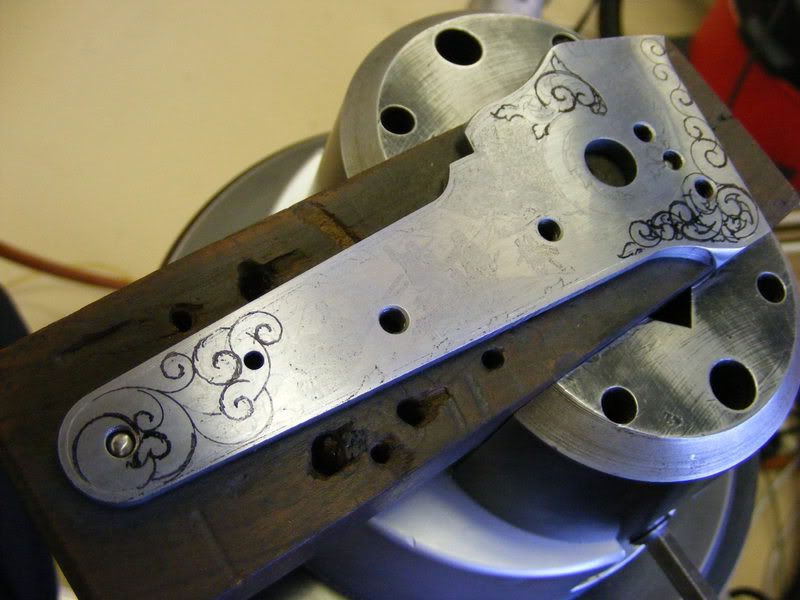
Cutting...
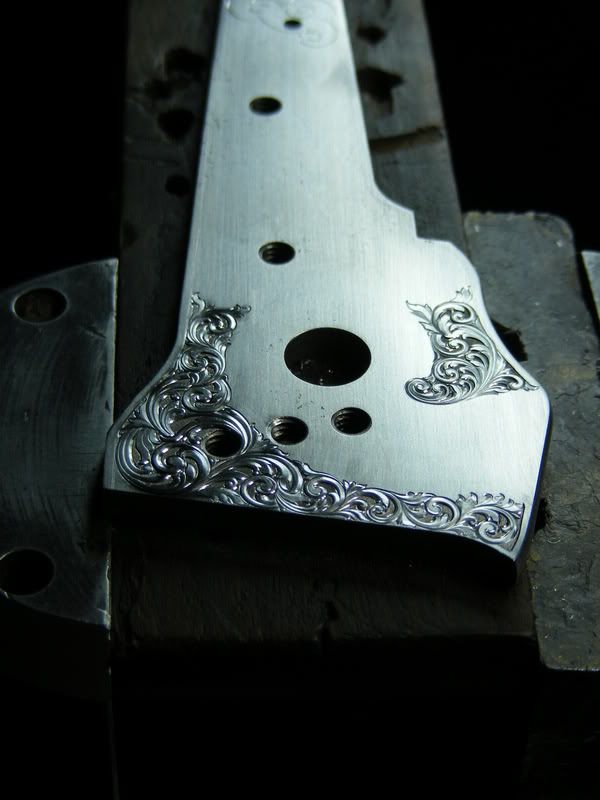
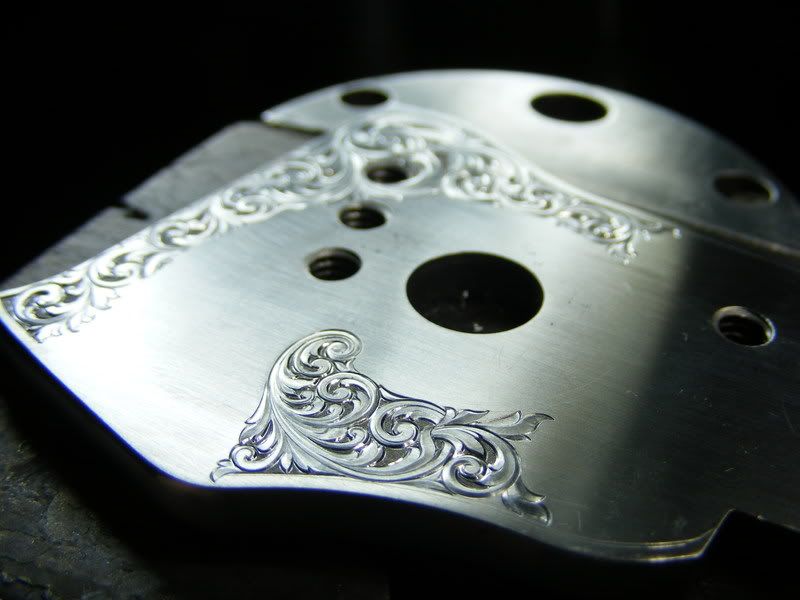
Posted: Wed Jul 30, 2008 8:00 pm
by horsefly
Good morning, Damn Yankee;
Let me inject a personal note here. I am not a great fan of heavy engraving. That said, I have the deepest admiration for those who can do this kind of work and I hope you will keep up your posts outlining the process and especially the last ones about starting the engraving. Any kind of in-process illustration will be greatly appreciated.
I can surely learn something and I bet a lot of other people can, too.
Thanks.
Y'all be good.
horsefly
Posted: Thu Jul 31, 2008 12:47 pm
by DAMN YANKEE
Interesting little ditty, these are the detail shots of a tiny rope border that Barry is working on. The border will be used to continue the nautical theme and provide more detail around each image.
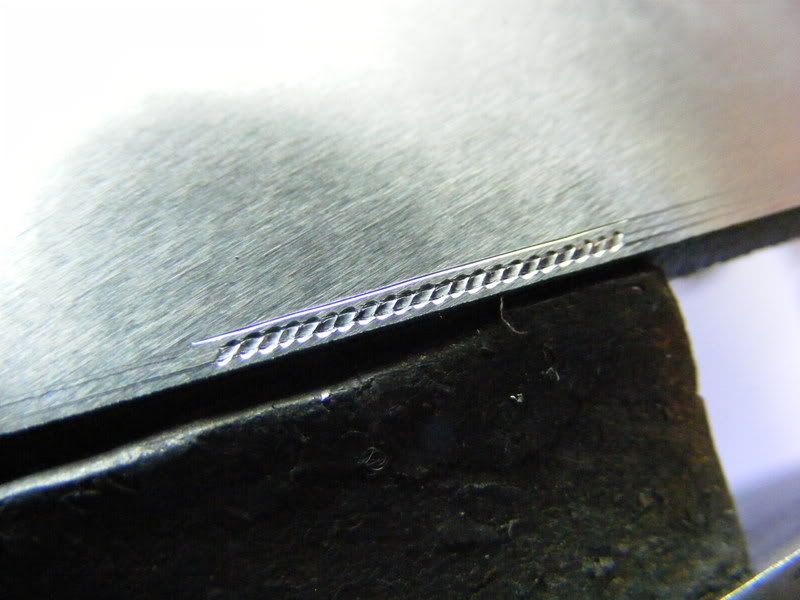
Photo taken through the scope....tiny, folks..
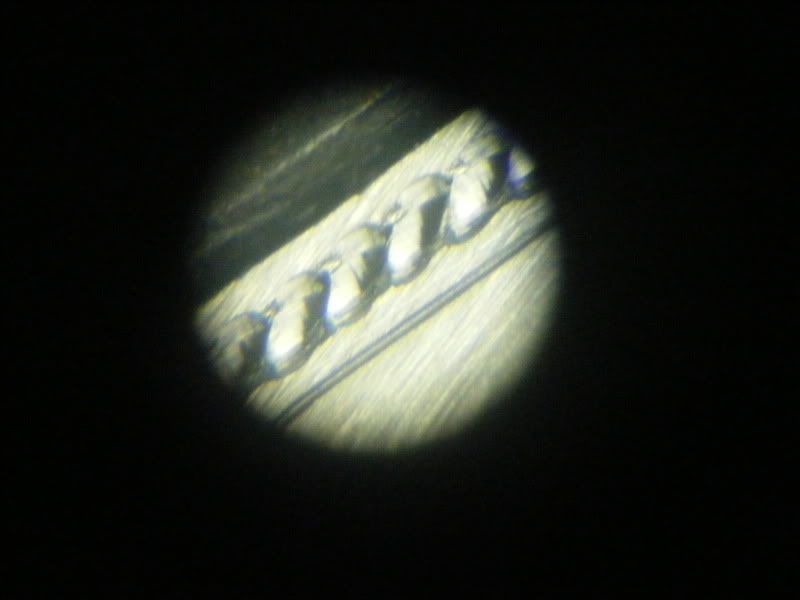
Posted: Fri Aug 01, 2008 12:49 pm
by DAMN YANKEE
On to the panel theme...

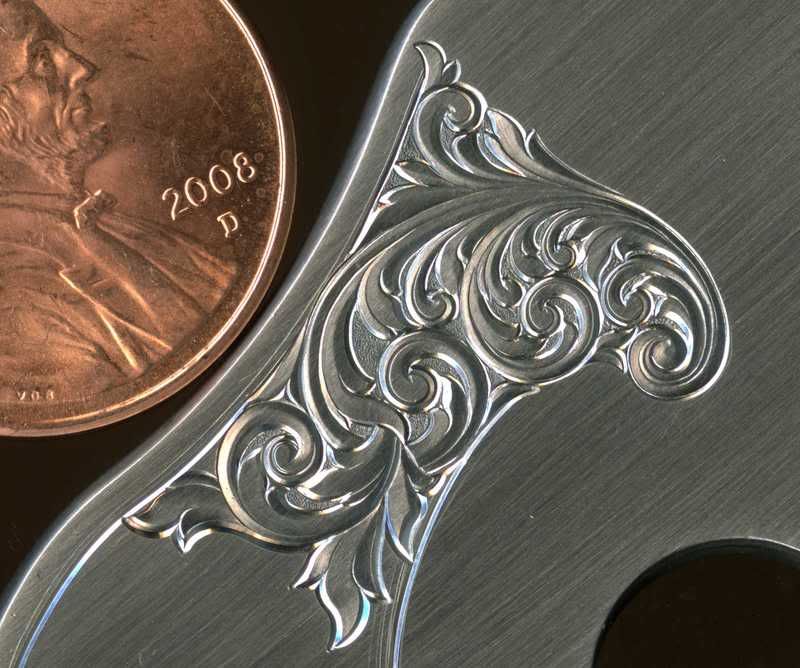
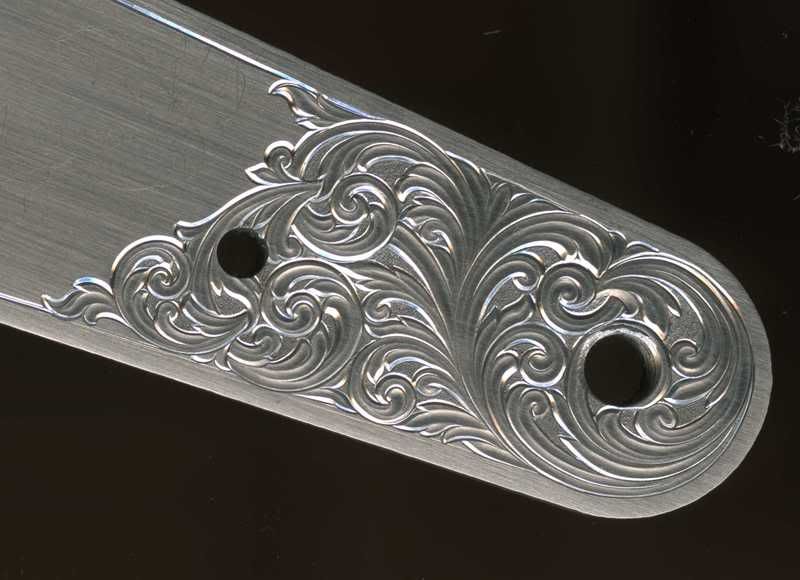
.
Posted: Fri Aug 01, 2008 1:27 pm
by DAMN YANKEE
One more to show the depth and contrast....
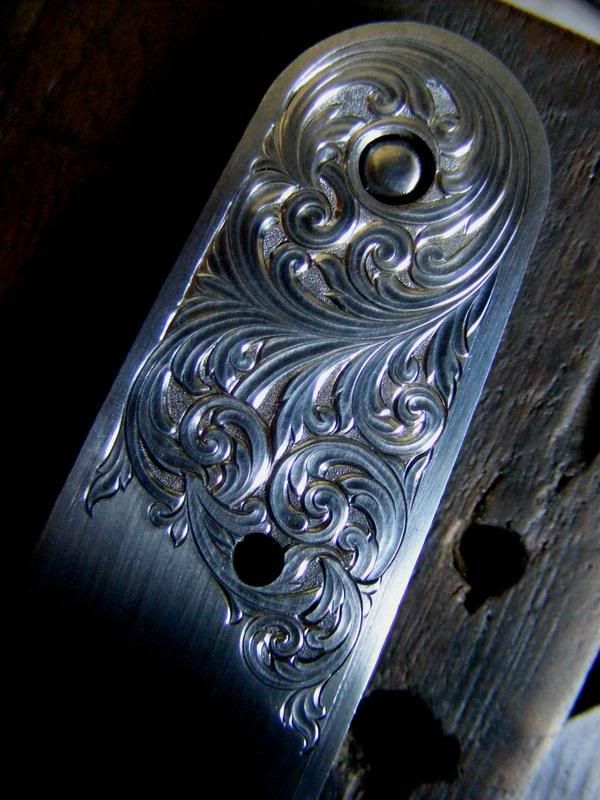
Posted: Fri Aug 01, 2008 3:47 pm
by Guncotton
You clearly picked the right person for the job !!!!!!!
That is mouth dropping work........


















